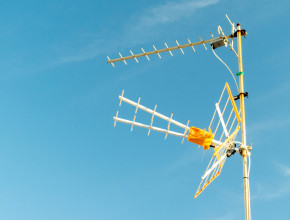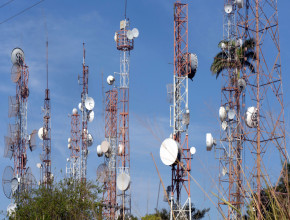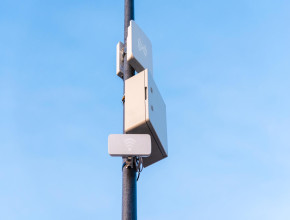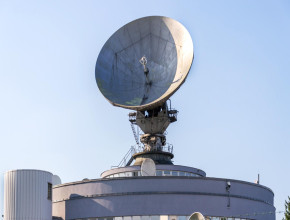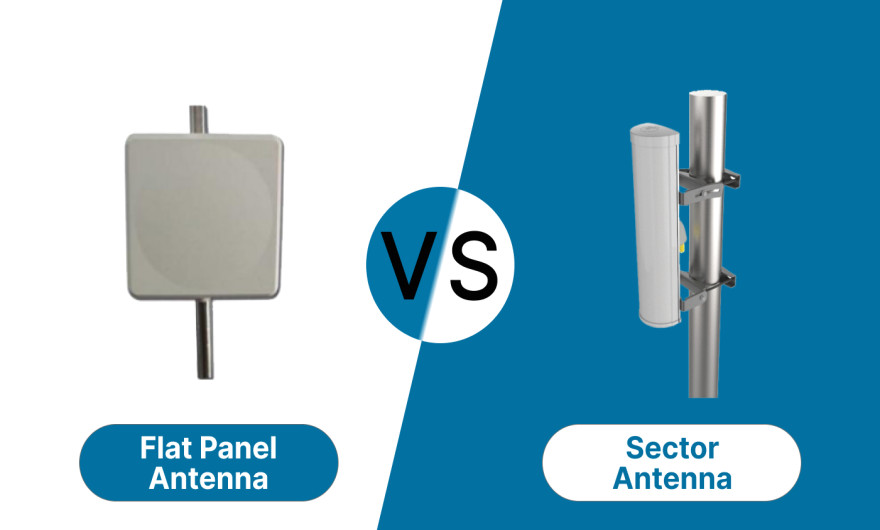
Today, flat panel and sector antennas are widely used in modern wireless communication. Both devices are ideal for getting directional coverage for long distances. Individuals and industries use these antennas in telecommunications, 5G, Wi-Fi networks, the military, and many other areas. You can find many similarities between the antennas. But they also have many differences that maintain their uniqueness. This post explores the key differences between flat panel antennas and sector antennas. Let’s get started!
Flat Panel Antenna vs. Sector Antenna
What is a flat panel antenna?
A flat panel antenna has its thin, square, or rectangular structure. It is compact and can be used in devices like satellites, drones, military vehicles, and 5G systems. Flat panel antennas are known for their high gain and narrow interference. They are better solutions for long-distance communication because of their directional radiation pattern. They also provide reduced interference from neighbouring devices.
Panel antennas support horizontal, vertical, or dual polarisation, which helps to maintain strong wireless connectivity in different conditions. They are used in applications such as internet connectivity, GPS, and communications.
What is a sector antenna?
A sector antenna is a wireless device that has a curved or flat and rectangular shape. It provides better signal connectivity when you mount this directional antenna on towers or buildings. It covers a specific area or angle, which is usually between 60 degrees and 120 degrees.
Sector antennas are used in mobile towers, base stations, and Wi-Fi networks. The key feature of this solution is its high gain and focused coverage capability. Sector antennas share and receive signals in a particular direction. It is one of the reliable solutions for outdoor environments, including urban, rural, and industrial areas.
Difference Between Flat Panel Antenna and Sector Antenna
Flat panel and sector antennas are used for different applications. People use them for their specific uses and purposes. If you want to understand the difference between flat panel antennas and sector antennas, here are some key points to help you.
Shape and Design
One of the fundamental properties of a flat panel antenna is that they are slim, square, and compact in size. Its flat structure makes it ideal for installation in vehicles or small spaces. On the other hand, sector antennas are much larger than panel antennas. They have a rectangular and curved shape. It is best to install this Wi-Fi antenna in outdoor areas, on towers or poles, as its shape is long, rectangular, and large.
Coverage Pattern
Both are directional antennas, which means both can be used to share and receive signals in a particular direction. But these two antennas have a clear difference in how much area they cover. They also have differences in what type of communications they support. A GPS antenna can focus the signal into a straight and narrow beam. This reduces interference and ensures a strong connection between two fixed points.
A sector antenna divides coverage into sectors that help users to let multiple users or devices connect within that area. It is ideal for base stations and large public networks to make reliable connections between devices and systems. Sector antennas send signals in a specific direction but with a wider coverage angle (typically 60-120). That makes them suitable for covering sectors in a point-to-multipoint setup. You can utilise it as a WiFi antenna, a radio antenna, or other solutions.
Applications
Panel antennas are ideal for high-speed data transfer for 5G and LTE networks. Due to its small and compact size, it is also used in drones, satellites, and military vehicles. It can act as a car antenna to provide a connection while driving. Panel antennas are helpful in smart city solutions and IoT devices. With its strong power, you can also employ this solution in point-to-point communication systems.
On the other hand, sector antennas are widely used in cellular towers and base stations. It is ideal for covering large outdoor areas such as stadiums or campuses. This device supports point-to-multipoint communication, which is typically found in public Wi-Fi. Sector antennas are commonly used in industrial areas and remote areas.
Installation Environment
Flat panel antennas are one of the best solutions for vehicles, drones, and smart devices. Its small and sleek design makes it ideal and easy to mount. You can install this device in environments where a lightweight and compact solution is required. It performs well and offers a constant supply of wireless connectivity.
Sector antennas are ideal for long-distance communications. It is best for permanent outdoor setups where large area coverage and high user capacity are required. You can use it in telecommunications, public networks, and many other places. Due to their larger size, you may need to require professional help to make the installation process smooth and trustworthy.
Signal Strength and Interference
Flat panel antennas are directional antennas. It provides strong directional gain with less interference from nearby signals. It is an excellent solution for concentrating links and is used in telecommunications, defence, aerospace, automotive, maritime, satellite communications, transportation, and smart city industries.
Sector antennas also produce high gain but work with wider coverage. This can provide more interference when using this device in high traffic. This is why it is important to install this antenna with proper management or alignment. It is used in applications such as telecommunications, defence, transportation, mining, oil and gas, and smart cities.
Bottom Line
Today, better connectivity and robust communications are paramount for supporting fast data transfer, real-time communication, and seamless access to digital services. Both flat panel antennas and sector antennas provide better network connectivity. As you have seen, there are many differences between flat panel antennas and sector antennas. From their shape to signal strength, they work differently in various situations.
Panel antennas are designed for both indoor and outdoor situations where space is limited. Sector antennas, on the other hand, due to their larger size, are used in outdoor locations. You can use it on towers or rooftops to cover wider areas and connect multiple users over a wide area.

